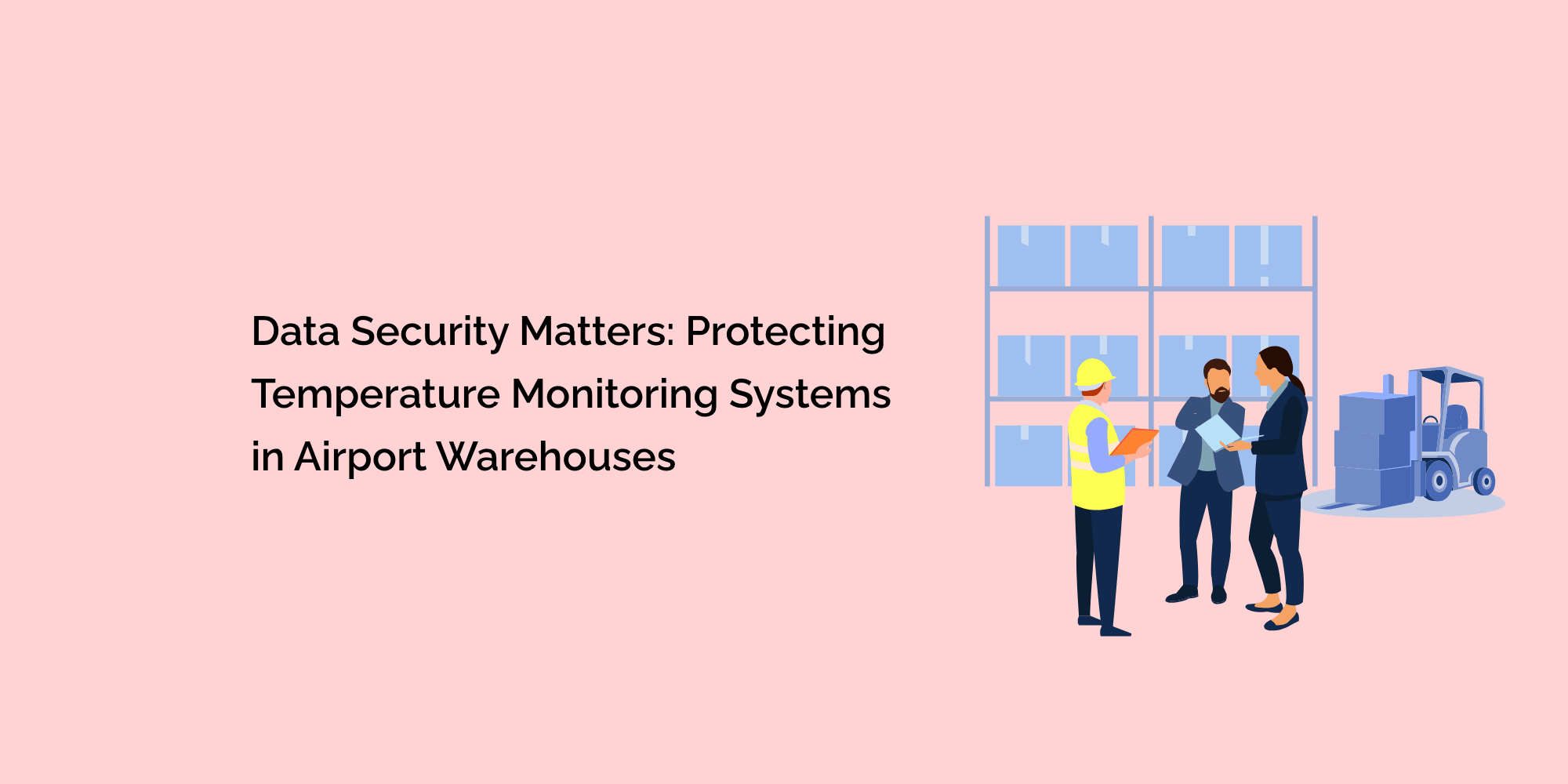In the digital age, data has become a valuable asset across various industries, including aviation and cargo transportation. Airport warehouses, responsible for handling temperature-sensitive cargo, rely heavily on temperature monitoring systems to ensure the integrity of their products.
However, with the increasing reliance on technology, data security becomes a critical concern. Protecting temperature monitoring systems from potential cybersecurity threats is essential to prevent unauthorized access, data breaches, and potential disruptions in warehouse operations.
In this blog, we will explore the significance of data security in airport warehouse temperature monitoring systems, the potential risks and vulnerabilities, and the best practices to safeguard these systems and the valuable data they handle.
The Importance of Data Security in Airport Warehouse Temperature Monitoring
1.1 Role of Temperature Monitoring Systems
Temperature monitoring systems are the backbone of maintaining a controlled environment in airport warehouses. These systems employ a network of sensors, data loggers, and communication technologies to continuously track and record temperature data.
Warehouse personnel rely on this data to ensure that temperature-sensitive cargo, such as pharmaceuticals and perishables, remains within the required temperature range. Any breach or manipulation of this data could lead to catastrophic consequences, compromising product quality and potentially harming public health.
1.2 Consequences of Data Breaches
Data breaches in temperature monitoring systems can have far-reaching repercussions. For instance, cybercriminals could alter temperature readings, leading warehouse operators to make incorrect decisions that might result in cargo spoilage or compromised product efficacy. Moreover, stolen temperature data could be used to exploit market vulnerabilities, trade-sensitive cargo information, or demand ransom from warehouse operators.
1.3 Compliance and Legal Obligations
Airport warehouses handling temperature-sensitive goods are bound by regulatory requirements and quality standards. Data breaches can not only lead to financial losses and reputational damage but also result in non-compliance with industry regulations. Compliance with data security standards is essential for maintaining the trust of customers, partners, and regulatory authorities.
Potential Risks and Vulnerabilities
2.1 Cybersecurity Threats
Airport warehouse temperature monitoring systems are susceptible to a wide range of cybersecurity threats, including ransomware, malware, phishing attacks, and unauthorized access. Cybercriminals can exploit vulnerabilities in system software, weak passwords, or unpatched security flaws to gain access to sensitive data.
2.2 Insider Threats
Internal personnel, intentionally or unintentionally, can pose significant data security risks. Employees with access to temperature monitoring systems may accidentally mishandle data or fall victim to social engineering attacks, leading to data breaches.
2.3 Third-Party Risks
Temperature monitoring systems often rely on third-party vendors for hardware, software, and cloud services. Any vulnerabilities in these components can expose the entire system to potential threats. Ensuring that third-party vendors adhere to strict security standards is crucial for maintaining data security.
Best Practices for Protecting Temperature Monitoring Systems
3.1 Data Encryption
Implementing robust data encryption protocols is essential for safeguarding sensitive temperature data. Encryption ensures that data is unreadable and unusable to unauthorized individuals even if it is intercepted during transmission or storage.
3.2 Access Controls
Adopting a principle of least privilege is crucial for limiting access to temperature monitoring systems. Warehouse personnel should only have access to data and functionalities necessary for their roles. Additionally, implementing multi-factor authentication adds an extra layer of security to prevent unauthorized access.
3.3 Regular System Updates and Patches
Keeping temperature monitoring systems up to date with the latest software patches and updates is crucial for mitigating known vulnerabilities. Regularly applying security patches helps protect against exploits used by cybercriminals to gain unauthorized access.
3.4 Network Segmentation
Segmenting the network can isolate temperature monitoring systems from other warehouse operations, minimizing the impact of a potential breach and limiting unauthorized lateral movement within the network.
3.5 Training and Awareness
Regular training and awareness programs can educate warehouse personnel about potential data security threats and best practices for identifying and mitigating them. Employees should be trained to recognize phishing attempts, social engineering tactics, and other common cybersecurity risks.
3.6 Incident Response Plan
Developing a comprehensive incident response plan is essential for handling data breaches effectively. The plan should outline the steps to be taken in the event of a data breach, including containment, eradication, and recovery procedures.
Regular Audits and Penetration Testing
Conducting regular security audits and penetration testing helps identify potential vulnerabilities in the temperature monitoring system. Penetration testing simulates real-world cyberattacks to assess the system's resilience and discover potential weak points.
Conclusion
In the technologically advanced world of airport warehouses, data security is of paramount importance. Temperature monitoring systems play a crucial role in ensuring the integrity and quality of temperature-sensitive cargo. Protecting these systems from cybersecurity threats is vital to prevent unauthorized access, data breaches, and potential disruptions in warehouse operations.
By implementing data encryption, access controls, regular system updates, network segmentation, and comprehensive training programs, airport warehouses can fortify their temperature monitoring systems against potential risks and vulnerabilities.
By adopting proactive data security measures, airport warehouses can uphold compliance with regulatory standards, safeguard their reputation, and maintain the trust of customers and partners alike.








